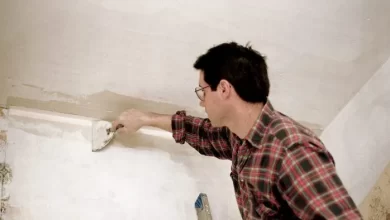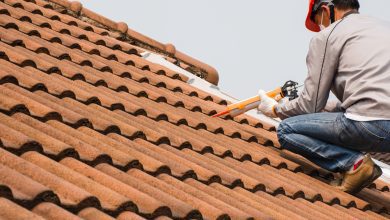Is Composite Cladding Expensive?

When exposed to changes in temperature, composite cladding expands like other composite materials. As a result, while installing composite cladding boards, you should provide minimal spacing between the panels.
What is Expansion and why does Composite Cladding expand?
The movement, or more precisely, the development, of material along its borders is known as expansion. The size of a construction material expands when it expands. When the conditions for expansion are favorable, most construction materials such as composite decking, fences, and cladding will expand. Even wood expands with time. If the temperature changes, the composite cladding will expand or grow in size. The term “temperature fluctuation” simply refers to a shift in temperature. The temperature in the area fluctuates on a regular basis. In a single day, it might go from scorching to freezing. It may also go from cold to hot in the other direction.
When the temperature around your cladding rises, the size of your cladding grows as well. This means that when the temperature rises, the size of your composite cladding boards will expand. Your composite cladding will shrink in size when the weather changes from hot to cold. If you reside in a place with consistent temperatures, this expansion, and contraction of composite cladding may not be visible. If you reside in a humid climate, your cladding will expand due to the constant heat. However, you may not be aware that your cladding is rapidly increasing. If you live in a cold climate, you will not see your cladding contracting. However, if you live in a location with frequent temperature fluctuations, you will notice that your cladding is growing. As a result of the temperature change, composite cladding expands.
Expansion Gap in Composite Cladding
For both homeowners and cladding manufacturers, the expansion and contraction of composite cladding is a concern. Warping is a problem that homeowners must cope with. This means that as composite cladding boards or panels grow, they will come into contact with one another. If there isn’t enough room between the composite cladding boards, they’ll press against each other and distort. The composite cladding broke out of the bolts you used to hold it down as if the warping wasn’t bad enough. Composite cladding manufacturers do not want to lose consumers, therefore they have devised a method of controlling expansion and contraction. The only method to prevent composite cladding from expanding and contracting is to provide a space between the panels.
This gap is referred to as an expansion gap by Komposit Beklädnad manufacturers. As a result, if you want to install your composite cladding properly, you need to leave a gap. exterior wall cladding that stretches in response to an expansion gap A 5 mm spacing or gap between the cladding boards is required. If you don’t allow a 5 mm gap between your cladding panels, your composite cladding will distort or shrink. Keep in mind that any permanent item near to your composite cladding must have a distance between them. When installing composite cladding, leaving a gap is not the only thing you must do.
There are a few things to remember while installing composite cladding.
A batten is a flat piece of wood similar to a plank. Battens are installed between composite cladding panels and the home’s outside wall. Putting a batten is a straightforward process. Your house’s wall should not come into contact with your composite covering. This is due to the fact that the wall may contain moisture, which will be trapped by the cladding. When moisture is trapped in your cladding, it will absorb it, reducing its longevity. For battens, you can use treated wood or trä-plastkomposit boards. You should also space your battens 400 mm apart before installing them. Pre-drill your battens beforehand so that attaching them to the wall is simple.
Always make use of the appropriate tools.
When installing your composite cladding, make sure you have the right equipment for the job. A saw, spirit level, measuring tape, a maker, a glove, and safety glasses are all required. You should know how to use the tools in addition to having them. You can read the manufacturer’s handbook if you’re not familiar with the tools.
Conclusion
Is composite cladding prone to expansion? When the temperature changes, the composite cladding will expand. You must allow a 5 mm expansion gap to restrict expansion.






